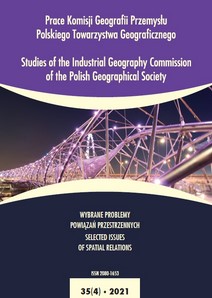Przeobrażenia przestrzenno-funkcjonalne terenów poportowych w Szczecinie w świetle klasycznych modeli miasto–port
Spatial and functional transformations of post-port areas in Szczecin (Poland) in the context of classical city-port models
Author(s): Jacek RudewiczSubject(s): Environmental Geography, Rural and urban sociology, Environmental interactions
Published by: Wydawnictwo Uniwersytetu Komisji Edukacji Narodowej w Krakowie
Keywords: brownfields; port; port cities; urban planning; waterfronts;
Summary/Abstract: The purpose of this paper is to confront the theoretical issues present in the academic literature in the form of spatial-functional models for urban and port areas with the observed relationships for these areas based on the example of a selected city in Poland. The article addresses the issues of universality of models created by geographers and urban planners studying the evolution of city/port systems in the context of changing global trends in technology, economics and scale of maritime transport. The article describes the interface zone, the area where the city and the port meet, which in the current economic conditions and aspirations of contemporary cities to revitalise their space is turning into a zone with great potential. Examples of such opportunities include Rotterdam, Hamburg, Copenhagen, Baltimore, Gdańsk and, similar in size to Szczecin, the city of Bilbao. The success of these cities shows that the effort of revitalisation brings them great branding benefits. The article contains a description of the development of relations between the city of Szczecin and its “genetic code” of port and industrial areas, together with an outline of the city’s future intentions and plans for the inherited port areas.
Journal: Prace Komisji Geografii Przemysłu Polskiego Towarzystwa Geograficznego
- Issue Year: 35/2021
- Issue No: 4
- Page Range: 109-127
- Page Count: 19
- Language: Polish

